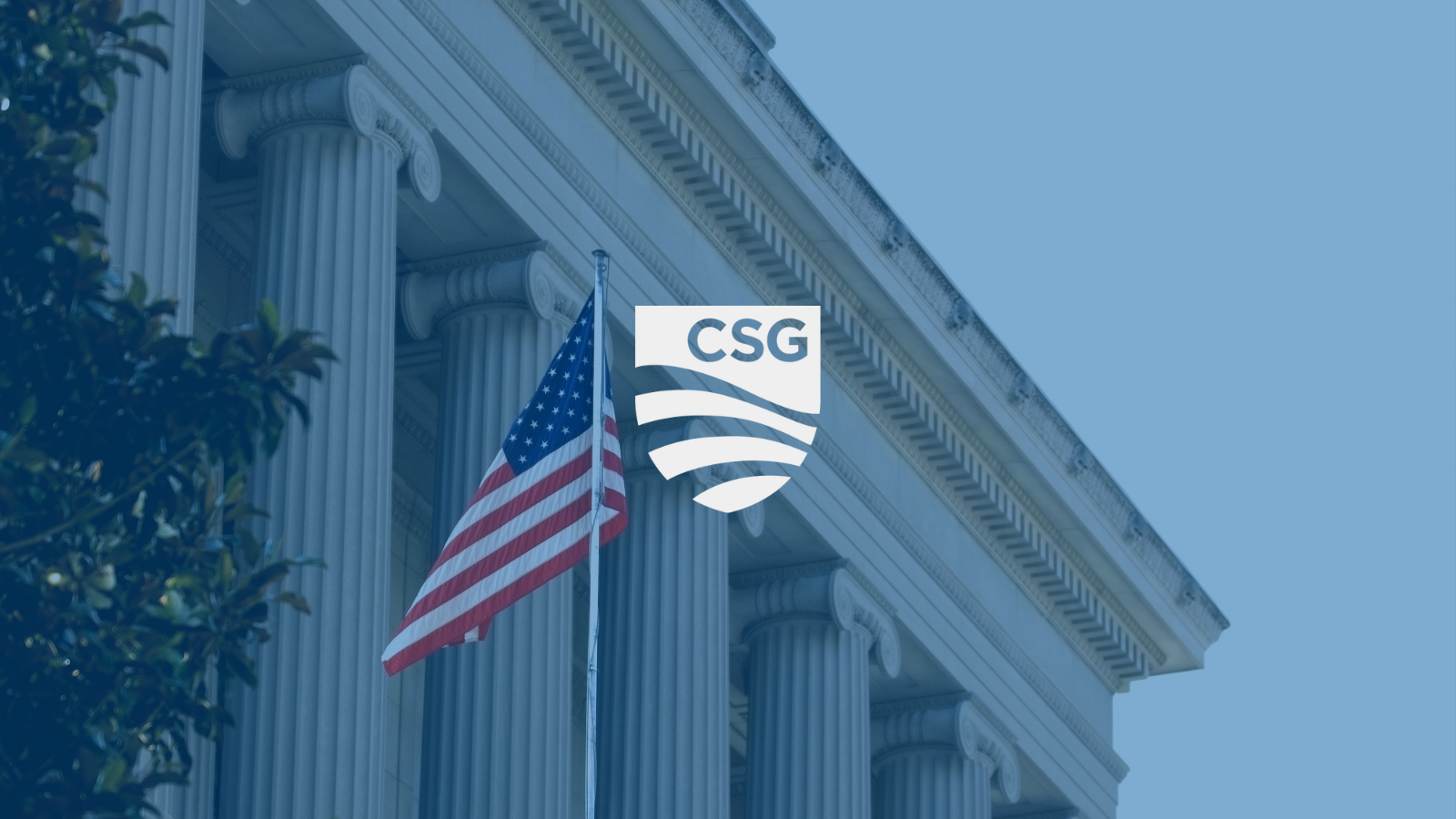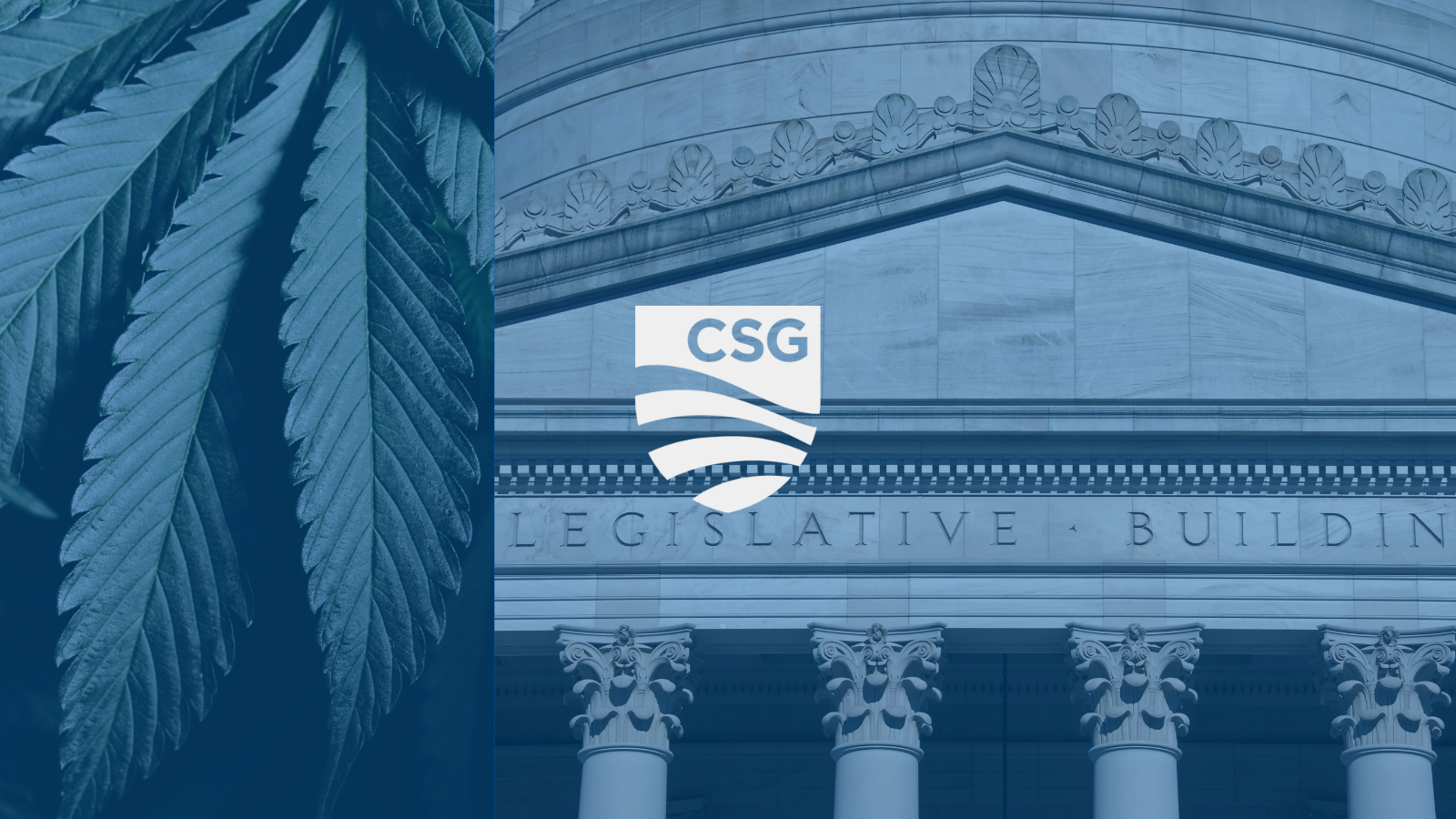By Ishara Nanayakkara
State legislative leadership roles directly impact the agendas and actions of legislatures. Although voters are responsible for electing officials, they have little direct say in who holds leadership positions within each chamber as the legislatures usually select their own leaders.
These leadership roles, such as creating the calendar or presiding over debates, allow elected officials to play a more significant role in policymaking than the typical legislator. For instance, presiding officers, such as the House speaker and Senate president, have the power to exert decisive control over legislative proceedings. They oversee the process through which legislation is referred to a committee and are responsible for setting and executing agendas.
Those holding leadership positions play explicit and implicit roles in elections by making appearances at campaign events or developing strategies to hold a majority in or change control of a chamber. Other institutional management duties consist of making committee assignments, appointing committee chairs and legislators to task forces, enforcing disciplinary measures, and overseeing staff. This means leaders have the power to advance or even stall the careers of individual legislators.
Quick Facts About Legislative Leaders
- The late Sen. Thomas Vincent Miller Jr. served as Maryland’s president of the Senate from 1987 to 2019 and is the longest serving state senate president in the U.S.
- The Nebraska Legislature has only one chamber, called the Unicameral, meaning there are fewer legislative leadership roles. Instead of having a speaker of the House and a president of the Senate, Nebraska has a speaker of the legislature.
- In 26 states, the lieutenant governor serves as the president of the Senate. In other states, members of the chamber choose the president of the Senate.
- Lieutenant governors are usually elected, but the title in Tennessee and West Virginia is given to the member-selected Senate leader.
Overview of Legislative Leadership Roles
The president of the Senate is the primary leader of the Senate and the speaker of the House is the primary leader of the House or Assembly. Their duties for each respective body include:
- Presiding over daily sessions.
- Preserving order in the chamber.
- Stating parliamentary motions.
- Ruling on parliamentary questions.
- Appointing committee chairs and members.
- Referring bills to committee.
- Signing legislation.
- Acting as the official Senate spokesperson
President pro tempore and speaker pro tempore preside over the Senate or House and exercise all powers and duties in the absence of the Senate president or House speaker. They also carry out other duties as assigned by the Senate president or House speaker, which can vary by state. These positions may be honorary ones, but in states where the lieutenant governor presides over the Senate, the president pro tem serves as a de facto president.
The majority leader is the lead speaker for the majority party during debates. They also develop the calendar and assist the president or speaker with program development, policy formation and policy decisions.
The majority caucus chair is responsible for developing the majority caucus agenda with the president and speaker, presiding over majority caucus meetings and assisting with policy development.
The majority whip’s duties include assisting the floor leader, ensuring attendance, counting votes and communicating the position of the majority.
The minority leader serves as the principal leader of the minority caucus. They are responsible for developing the minority position, negotiating with the majority party, directing activities on the chamber floor and leading debate for the minority.
The minority caucus chair’s duties include presiding over caucus meetings and assisting the minority leader with policy development. The minority whip is responsible for assisting the minority leader on the floor, counting votes and ensuring attendance of members of the minority party.
2023 State Legislative Leaders
(as of Feb. 13, 2023)
| States | House | Senate |
| Alabama | Speaker: Nathaniel Ledbetter Speaker Pro Tem: Chris Pringle Majority Leader: Scott Stadthagen Minority Leader: Anthony Daniels | Lt. Governor/President: Will Ainsworth President Pro Tem: Greg Reed Majority Leader: Clay Scofield Minority Leader: Bobby Singleton |
| Alaska | Speaker: Cathy Tilton Majority Leader: Dan Saddler Minority Leader: Calvin Schrage | President: Gary Stevens Majority Leader: Cathy Giessel |
| Arizona | Speaker: Ben Toma Speaker Pro Tem: Travis Grantham Majority Leader: Leo Biasiucci Minority Leader: Andrés Cano | President: Warren Petersen President Pro Tem: T.J. Shope Majority Leader: Sonny Borrelli Minority Leader: Raquel Terán |
| Arkansas | Speaker: Matthew Shepherd Speaker Pro Tem: Jon Eubanks Majority Leader: Marcus Richmond Minority Leader: Tippi McCullough | President Pro Tem: Bart Hester Majority Leader: Blake Johnson Minority Leader: Gred Leding |
| California | Speaker: Anthony Rendon Speaker Pro Tem: Christopher Ward Majority Leader: Eloise Reyes Minority Leader: James Gallagher | President Pro Tem: Toni Atkins Minority Leader: Brian Jones |
| Colorado | Speaker: Julie McCluskie Speaker Pro Tem: Chris deGruy Kennedy Majority Leader: Monica Duran Minority Leader: Mike Lynch | President: Steve Fenberg President Pro Tem: James Coleman Majority Leader: Dominick Moreno Minority Leader: Paul Lundeen |
| Connecticut | Speaker: Matt Ritter Majority Leader: Jason Rojas Minority Leader: Vincent Candelora | President Pro Tem: Martin Looney Majority Leader: Bob Duff Republican Leader: Kevin Kelly |
| Delaware | Speaker: Peter Schwartzkopf Majority Leader: Valerie Longhurst Minority Leader: Michael Ramone | President Pro Tem: David Sokola Majority Leader: Bryan Townsend Minority Leader: Gerald Hocker |
| District of Columbia | Chairman: Phil Mendelson Chairman Pro Tem: Kenyan McDuffie | |
| Florida | Speaker: Paul Renner Speaker Pro Tem: Chuck Clemons Majority Leader: Michael Grant Minority Leader: Fentrice Driskill | President: Kathleen Passidomo President Pro Tem: Dennis Baxley Majority Leader: Ben Albritton Minority Leader: Lauren Book |
| Georgia | Speaker: Jon Burns Speaker Pro Tem: Jan Jones Majority Leader: Chuck Efstration Minority Leader: James Beverly | Lt. Governor: Burt Jones President Pro Tem: John Kennedy Majority Leader: Steve Gooch Minority Leader: Gloria Butler |
| Hawaii | Speaker: Scott Saiki Vice Speaker: Greggor Ilagan Majority Leader: Nadine Nakamura Minority Leader: Lauren Cheape Matsumoto | President: Ron Kouchi Vice President: Michelle Kidani Majority Leader: Dru Mamo Kanuha |
| Idaho | Speaker: Mike Moyle Majority Leader: Megan Blanksma Minority Leader: Ilana Rubel | President Pro Tem: Chuck Winder Majority Leader: Kelly Arthur Anthon Minority Leader: Melissa Wintrow |
| Illinois | Speaker: Chris Welch Majority Leader: Robyn Gabel Minority Leader: Tony McCombie | President: Don Harmon President Pro Tem: Bill Cunningham Majority Leader: Kimberly Lightford Minority Leader: John Curran |
| Indiana | Speaker: Todd Huston Speaker Pro Tem: Mike Karickhoff Majority Floor Leader: Matt Lehman Minority Leader: Phil GiaQuinta | President Pro Tempore: Rodric Bray Majority Floor Leader: Chris Garten Minority Floor Leader: Greg Taylor |
| Iowa | Speaker: Pat Grassley Speaker Pro Tem: John Wills Majority Leader: Matt Windschitl Minority Leader: Jennifer Konfrst | President: Amy Sinclair President Pro Tem: Brad Zaun Majority Leader: Jack Whitver Minority Leader: Zach Wahls |
| Kansas | Speaker: Dan Hawkins Speaker Pro Tem: Blake Carpenter Majority Leader: Chris Croft Minority Leader: Vic Miller | President: Ty Masterson Vice President: Rick Wilborn Majority Leader: Larry Alley Minority Leader: Dinah Sykes |
| Kentucky | Speaker: David Osborne Speaker Pro Tem: David Meade Majority Floor Leader: Steven Rudy Minority Floor Leader: Derrick Graham | President: Robert Stivers President Pro Tem: David Givens Majority Floor Leader: Damon Thayer Minority Floor Leader: Gerald Neal |
| Louisiana | Speaker: Clay Schexnayder Speaker Pro Tem: Tanner Magee | President: Page Cortez President Pro Tem: Beth Mizell |
| Maine | Speaker: Rachel Talbot Ross Majority Leader: Maureen Terry Minority Leader: Billy Bob Faulkingham | President: Troy Jackson Majority Leader: Eloise Vitelli Minority Leader: Trey Stewart |
| Maryland | Speaker: Adrienne Jones Speaker Pro Tem: Sheree Sample- Hughes Majority Leader: Marc Korman Minority Leader: Jason Buckel | President: Bill Ferguson President Pro Tem: Malcolm Augustine Majority Leader: Nancy King Minority Leader: Vacant |
| Massachusetts | Speaker: Ron Mariano Minority Leader: Brad Jones | President: Karen Spilka Minority Leader: Bruce Tarr |
| Michigan | Speaker: Joe Tate Speaker Pro Tem: Laurie Pohutsky Majority Floor Leader: Abraham Aiyash Minority Leader: Matt Hall | President Pro Tem: Jeremy Moss Majority Leader: Winnie Brinks Minority Leader: Aric Nesbitt |
| Minnesota | Speaker: Melissa Hortman Speaker Pro Tem: Dan Wolgamott Majority Leader: Jamie Long Minority Leader: Lisa Demuth | President: Bobby Joe Champion President Pro Tempore: Ann Rest Majority Leader: Kari Dziedzic Minority Leader: Mark Johnson |
| Mississippi | Speaker: Philip Gunn Speaker Pro Tem: Jason White | Lt. Governor/President: Delbert Hosemann President Pro Tem: Dean Kirby |
| Missouri | Speaker: Dean Plocher Speaker Pro Tem: Mike Henderson Majority Floor Leader: Jon Patterson Minority Floor Leader: Crystal Quade | President Pro Tem: Caleb Rowden Majority Floor Leader: Cindy O’Laughlin Minority Floor Leader: John Rizzo |
| Montana | Speaker: Matt Regier Speaker Pro Tem: Rhonda Knudsen Majority Leader: Sue Vinton Minority Leader: Kim Abbott | President: Jason Ellsworth President Pro Tem: Kenneth Bogner Majority Leader: Steve Fitzpatrick Minority Leader: Pat Flowers |
| Nebraska | Unicameral | Speaker: John Arch |
| Nevada | Speaker: Steve Yeager Speaker Pro Tem: Daniele Monroe- Moreno Majority Floor Leader: Sandra Jaurgui Minority Floor Leader: P.K. O’Neill | President: Stavros Anthony President Pro Tem: Pat Spearman Majority Leader: Nicole Cannizzaro Minority Leader: Heidi Seevers Gansert |
| New Hampshire | Speaker: Sherman Packard Speaker Pro Tem: Laurie Sanborn Majority Leader: Jason Osborne Minority Leader: Matthew Wilhelm | President: Jeb Bradley President Pro Tem: James Gray Majority Leader: Sharon Carson Minority Leader: Donna Soucy |
| New Jersey | Speaker: Craig Coughlin Speaker Pro Tem: Benjie Wimberly Majority Leader: Louis Greenwald Republican Leader: John DiMaio | President: Nicholas Scutari President Pro Tem: Sandra Cunningham Majority Leader: M. Teresa Ruiz Minority Leader: Steve Oroho |
| New Mexico | Speaker: Javier Martinez Majority Floor Leader: Gail Chasey Minority Floor Leader: Ryan Lane | President Pro Tem: Mimi Stewart Majority Floor Leader: Peter Wirth Minority Floor Leader: Gregory Baca |
| New York | Speaker: Carl Heastie Speaker Pro Tem: Jeffrion Aubry Majority Leader: Crystal Peoples-Stokes Minority Leader: William Barclay | President Pro Tempore/Majority Leader: Andrea Stewart-Cousins Minority Leader: Rob Ortt |
| North Carolina | Speaker: Tim Moore Speaker Pro Tem: Sarah Stevens Majority Leader: John Bell Minority Leader: Robert Reives | President Pro Tem: Phil Berger Majority Leader: Paul Newton Minority Leader: Dan Blue |
| North Dakota | Speaker: Dennis Johnson Majority Leader: Mike Lefor Minority Leader: Josh Boschee | President Pro Tem: Donald Schaible Majority Leader: David Hogue Minority Leader: Kathy Hogan |
| Ohio | Speaker: Jason Stephens Speaker Pro Tem: Scott Oelslager Majority Floor Leader: Bill Seitz Minority Leader: Allison Russo | President: Matt Huffman President Pro Tem: Kirk Schuring Majority Floor Leader: Rob McColley Minority Leader: Nickie J. Antonio |
| Oklahoma | Speaker: Charles McCall Speaker Pro Tem: Kyle Hilbert Majority Floor Leader: Jon Echols Minority Leader: Cyndi Munson | President Pro Tem: Greg Treat Majority Floor Leader: Greg McCortney Minority Floor Leader: Kay Floyd |
| Oregon | Speaker: Dan Rayfield Speaker Pro Tem: Paul Holvey Majority Leader: Julie Fahey Minority Leader: Vikki Breese-Iverson | President: Rob Wagner President Pro Tem: James Manning Jr. Majority Leader: Kate Lieber Minority Leader: Tim Knopp |
| Pennsylvania | Speaker: Mark Rozzi Republican Leader: Bryan Cutler Minority Leader: Joanna McClinton | President Pro Tem: Kim Ward Majority Leader: Joe Pittman Minority Leader: Jay Costa |
| Rhode Island | Speaker: K. Joseph Shekarchi Speaker Pro Tem: Brian Patrick Kennedy Majority Leader: Christopher Blazejewski Minority Leader: Michael Chippendale | President: Dominick Ruggerio President Pro Tem: Hanna Gallo Majority Leader: Ryan Pearson Minority Leader: Jessica de la Cruz |
| South Carolina | Speaker: G. Murrell Smith Jr. Speaker Pro Tem: Tommy Pope Majority Leader: David Hiott Minority Leader: J. Todd Rutherford | President: Thomas Alexander Majority Leader: A. Shane Massey Minority Leader: Brad Hutto |
| South Dakota | Speaker: Hugh Bartels Speaker Pro Tem: Mike Stevens Majority Leader: Will Mortenson Minority Leader: Oren Lesmeister | President Pro Tem: Lee Schoenbeck Majority Leader: Casey Crabtree Minority Leader: Reynold Nesiba |
| Tennessee | Speaker: Cameron Sexton Speaker Pro Tem: Pat Marsh Majority Leader: William Lamberth Minority Leader: Karen Camper | Lt. Governor/Speaker of the Senate: Randy McNally Speaker Pro Tem: Ferrell Haile Majority Leader: Jack Johnson Minority Leader: Raumesh Akbari |
| Texas | Speaker: Dade Phelan Speaker Pro Tem: Vacant | Lt. Governor/President: Dan Patrick President Pro Tempore: Kelly Hancock |
| Utah | Speaker: Brad Wilson Majority Leader: Mike Schultz Minority Leader: Angela Romero | President: Stuart Adams President Pro Tem: Wayne Harper Majority Leader: Evan Vickers Minority Leader: Luz Escamilla |
| Vermont | Speaker: Jill Krowinski Majority Leader: Emily Long Minority Leader: Patricia McCoy | President Pro Tem: Philip Baruth Majority Leader: Alison Clarkson Minority Leader: Randy Brock |
| Virginia | Speaker: Todd Gilbert Majority Leader: Terry Kilgore Minority Leader: Don Scott Jr. | President Pro Tem: Louise Lucas Majority Leader: Richard Saslaw Minority Leader: Thomas Norment Jr. |
| Washington | Speaker: Laurie Jinkins Speaker Pro Tem: Tina Orwall Majority Leader: Joe Fitzgibbon Minority Leader: J.T. Wilcox | President Pro Tem: Karen Keiser Vice President Pro Tem: John Lovick Majority Leader: Andy Billig Minority Leader: John Braun |
| West Virginia | Speaker: Roger Hanshaw Speaker Pro Tempore: Paul Espinosa Majority Leader: Eric Householder Minority Leader: Doug Skaff | Senate President: Craig Blair President Pro Tempore: Donna Boley Majority Leader: Tom Takubo Minority Leader: Mike Woelfel |
| Wisconsin | Speaker: Robin Vos Speaker Pro Tem: Kevin Petersen Majority Leader: Tyler August Minority Leader: Greta Neubauer | President: Chris Kapenga President Pro Tem: Patrick Testin Majority Leader: Devin LeMahieu Minority Leader: Melissa Agard |
| Wyoming | Speaker: Albert Sommers Speaker Pro Tem: Clark Stith Majority Floor Leader: Chip Neiman Minority Floor Leader: Mike Yin | President: Ogden Driskill Vice President: Dave Kinksey Majority Floor Leader: Larry Hicks Minority Floor Leader: Chris Rothfuss |
| American Samoa | Speaker: Savali Talavou Ale | President: Tuaolo Fruean |
| Guam | Unicameral | Speaker: Therese Terlaje Vice-Speaker: Tina Rose Muña Barnes Minority Leader: Frank F. Blas Jr. |
| Northern Mariana Islands | Speaker: Edmund S. Villagomez Vice Speaker: Joel Castro Camacho Majority Floor Leader: Edwin Kenneth Propst | President: Victor Borja Hocog Vice President: Jude Untalan Hofschneider Majority Floor Leader: Justo Songao Quitugua |
| Puerto Rico | Speaker: Rafael “Tatito” Hernández Montañez Speaker Pro Tem: José M. Varela Fernández Majority Leader: Angel Matos Garcia Minority Leader: Carlos “Johnny” Mendez Nunez | President: José Luis Dalmau-Santiago Vice President: Marially González Huertas Majority Leader: Javier Aponte Dalmau Minority Leader: Thomas Rivera Schatz |
| U.S. Virgin Islands | Unicameral | President: Novelle Francis Jr. Vice President: Marvin Bylden |









